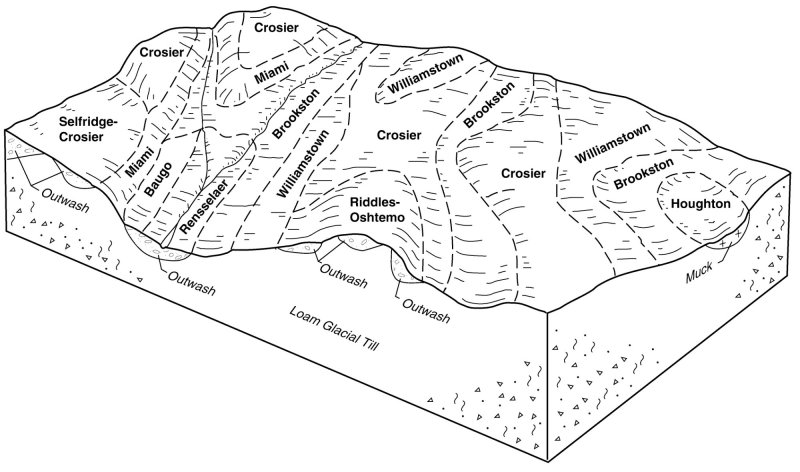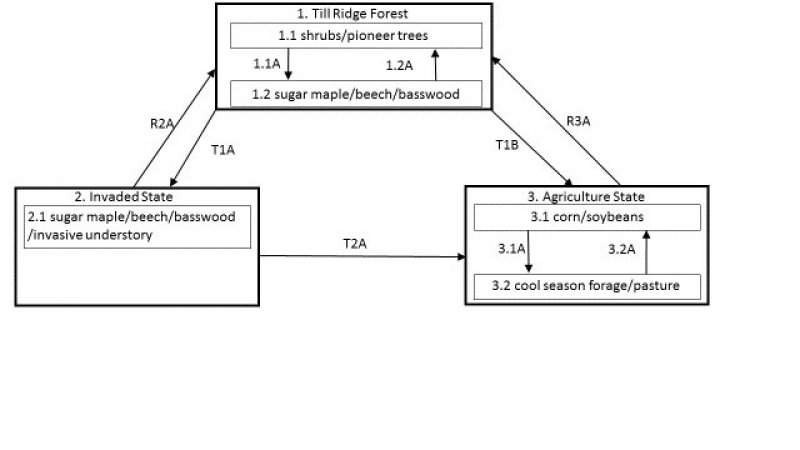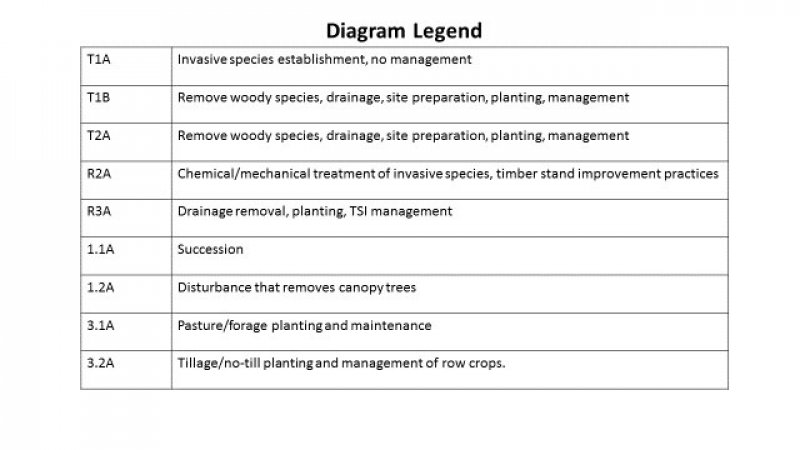
Natural Resources
Conservation Service
Ecological site F111XE503IN
Till Ridge
Last updated: 9/11/2024
Accessed: 12/22/2025
General information
Provisional. A provisional ecological site description has undergone quality control and quality assurance review. It contains a working state and transition model and enough information to identify the ecological site.
MLRA notes
Major Land Resource Area (MLRA): 111X–Indiana and Ohio Till Plain
111B – Indiana and Ohio Till Plain, Northeastern Part. This area is in the Eastern Lake and Till Plains Sections of the Central Lowland Province of the Interior Plains. The entire MLRA is glaciated, and most areas are dominated by ground moraines that are broken in places by lake plains, outwash plains, flood plains, and many recessional moraines. The ground moraines and lake plains in front of the recessional moraines are flat to undulating. In many places stream valleys occur at the leading edge of the recessional moraines. Narrow, shallow valleys commonly are along the major rivers and streams in this MLRA, and some areas along the major rivers and streams have deposits of sand. Elevation ranges from 630 to 1,550 feet (190 to 470 meters), increasing gradually from west to east. Relief is mainly a few meters, but in some areas hills rise as much as 100 feet (30 meters) above the adjoining plains.
The extent of the major Hydrologic Unit Areas (identified by four-digit numbers) that make up this MLRA is as follows: Western Lake Erie (0410), 41 percent; Wabash (0512), 28 percent; Scioto (0, 28 percent; Scioto (0506), 10 percent; St. Clair-Detroit (0409), 9 percent; Great Miami (0508), 6 percent; Southeastern Lake Michigan (0405), 5 percent; and Southwestern Lake Huron (0408), 1 percent. The Huron River in Michigan, Cedar Creek in Indiana, and the Sandusky River in Ohio have been designated as National Wild and Scenic Rivers in this MLRA.
The surficial materials in this area include glacial deposits of till, outwash, and lacustrine sediments from Wisconsin and older glacial periods. A thin mantle of loess occurs in some areas. Most of the MLRA is underlain by Silurian and Devonian limestone and dolostone. Middle Devonian to Early Mississippian black shale and Early to Middle Mississippian siltstone and shale are in some areas of the northern part of the MLRA.
Classification relationships
Major Land Resource Area (USDA-Natural Resources Conservation Service, 2006)
USFS Ecological Regions (USDA, 2007):
Sections –Central Till Plains, Beech Maple (222H), South Central Great Lakes (222J)
Subsections – Bluffton Till Plains (222Ha), Bluffton-Ann Arbor Till Plains (222Je), Jackson Interlobate Moraine (222Jg), Steuben Interlobate Moraines (222Ji)
NatureServe Systems anticipated (NatureServe, 2011): Agriculture - Cultivated Crops and Irrigated Agriculture, Agriculture – Pasture/Hay, North-Central Interior Beech-Maple Forest, Northeastern Interior Dry-Mesic Oak Forest
LANDFIRE Biophysical Settings anticipated (USGS, 2010): North-Central Interior Beech-Maple Forest, Northeastern Interior Dry-Mesic Oak Forest
Ecological site concept
This site is an upland site formed on glacial till parent materials located in a swell (convex) landscape position. It is located on largely on summits, shoulders and backslopes on slopes that can be up to 25%. The soils are moderately well to well drained with the surface being in the loamy texture group.
The characteristic vegetation of the site is of a till forest with the understory and canopy dominated by sugar maple, American beech, and basswood. Canopy level associates include white oak, bitternut and shagbark hickory, and black walnut. The site is dominated by shade tolerant, fire sensitive species. The most common disturbance dynamic is individual tree or small group mortality or windthrow with catastrophic windthrow or damage from ice storms to occur very infrequently. The largest risk to extant natural representation of the site is by invasion of non-native plants that, if unchecked, can dominate the understory. This greatly changes the species richness and diversity of the understory as the non-native plants, particularly species of Asian bush honeysuckle, exclude most all other species. The dominant canopy level trees are not threatened by these species, however given enough time this change could alter the composition of the canopy by altering the species that can get established in the understory. Currently, the majority of this site is being used for corn and soybean rotations.
Associated sites
| F111XB501IN |
Till Depression Till Depression. Located on concave landscape position. |
|---|---|
| F111XB502IN |
Wet Till Ridge Wet Till Ridge. On a convex landscape position and SWPD. |
Similar sites
| F111XB403IN |
Outwash Upland Outwash Upland |
|---|---|
| F111XB502IN |
Wet Till Ridge Wet Till Ridge |
| F111XB102IN |
Lacustrine Forest Lacustrine Forest |
| F111XB302IN |
Mesic Bedrock Forest Mesic Bedrock Forest |
Table 1. Dominant plant species
| Tree |
(1) Acer saccharum |
|---|---|
| Shrub |
Not specified |
| Herbaceous |
Not specified |
Click on box and path labels to scroll to the respective text.



